The Ultimate Guide to Land Clearing

Land Clearing Project in Hilton, Monroe County, NY
Whether you’re a property developer preparing a site for construction, a homeowner looking to maximize your property space, understanding the ins and outs of land clearing is essential.
In Western New York specifically in Niagara, Erie, Orleans, Genesee, Monroe, Wayne and Ontario counties, we’ve seen significant growth as both commercial and residential developments expand and tap undeveloped lands. This expansion necessitates land clearing services to accommodate new projects, ensuring that the land is prepared properly for construction while maintaining the balance between development and the natural environment. As these counties continue to grow, land clearing plays a crucial role in transforming previously undeveloped land into thriving communities and bustling business districts.
This comprehensive guide aims to provide you with detailed information on the importance, process, and benefits of land clearing, along with insights on working with professional services.
With over a decade of experience in the industry, we’re here to share the knowledge and expertise that will help you make informed decisions and achieve successful outcomes for your land clearing projects.
What is Land Clearing?
Land clearing is the process of removing trees, shrubs, bushes, and other vegetation from a plot of land to make it suitable for construction, landscaping, agriculture, or other uses. This essential step prepares the land by creating a clean, level, and stable surface, ready for further development or property enhancement.
The land clearing process involves various activities, including tree removal, stumps removal, brush clearing, and disposing of organic debris. Depending on the size and scope of the project, this can range from small-scale brush clearing for a backyard garden to extensive land clearing for large-scale construction projects or agricultural fields.
What is the Importance of Land Clearing?
Land clearing is the first and most crucial activity in preparing the groundwork for site and land development projects. It offers numerous benefits that are essential for the success of construction projects, and landscape improvements.
Let’s explore the key reasons why land clearing is so important:
- Site Preparation for Construction: Before any construction can begin, the land must be cleared and leveled. This process ensures a clean, level surface for land development and construction.
- Improved Safety and Accessibility. Eliminates hazards and provides access for construction equipment, vehicles, materials and personnel for the efficient and timely completion of your project.
- Maximized Usable Land. Proper land clearing maximizes the usable space on a property, allowing for better planning and utilization.
- Enhanced Aesthetic Appeal. Clearing overgrown vegetation and debris transforms a cluttered and chaotic landscape into a clean and visually appealing space.
Different Methods Used in Land Clearing
There are several methods used in land clearing, each suited to different types of vegetation and terrain:
• Manual Clearing: Involves the use of hand tools like chainsaws, axes, and machetes. This method is labor-intensive and typically used for smaller areas or when precision is needed.
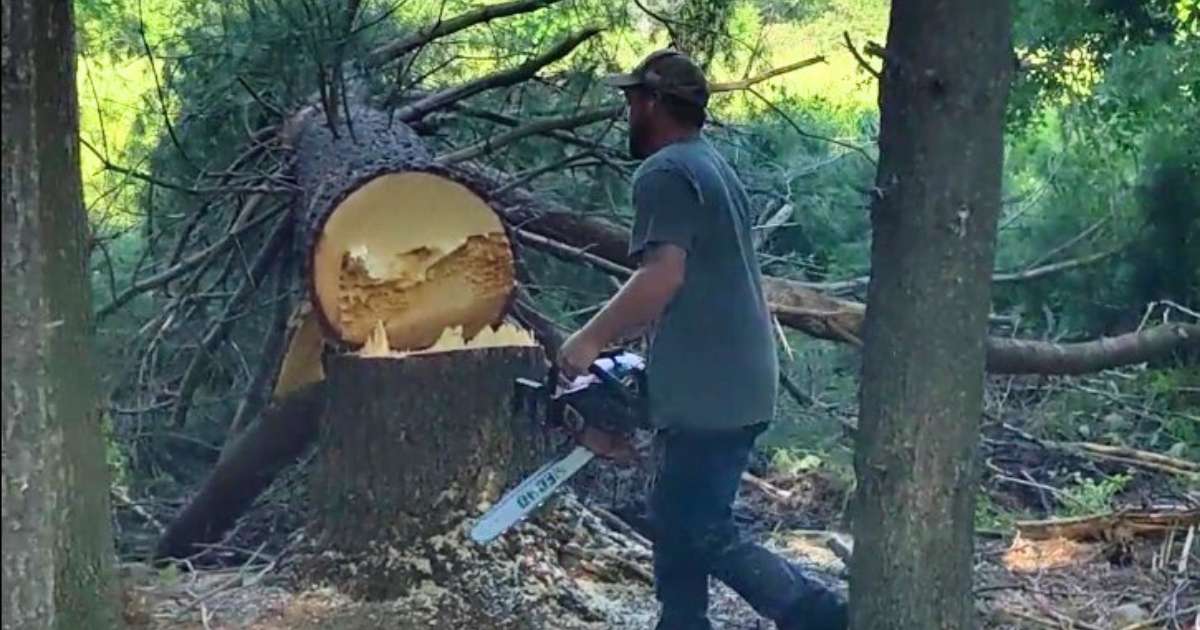
Manual Clearing and Cutting Tall Trees using Chainsaw
• Mechanical Clearing: Utilizes heavy machinery such as bulldozers, excavators, and mulchers to quickly and efficiently clear large areas. This method is ideal for extensive projects requiring significant vegetation removal.
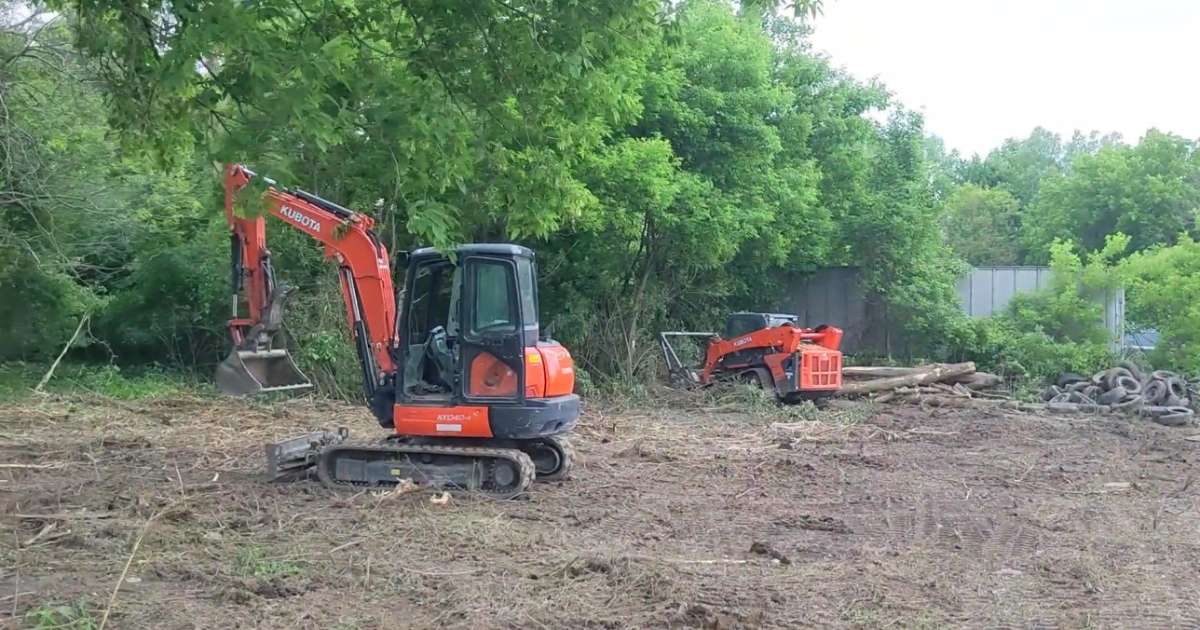
Mechanical Clearing using heavy machineries
• Chemical Clearing: Involves the use of herbicides or specific chemicals to kill unwanted vegetation. This method is often used for controlling invasive species or when other methods are impractical.
• Controlled Burning: A method where vegetation is burned in a controlled manner to clear land. This is typically used in agricultural settings but requires careful planning and adherence to safety regulations.
The Process of Land Clearing
Land Clearing effectively involves a series of carefully planned steps, each crucial for ensuring the site is properly prepared for construction, landscaping, or agricultural use. Below, we will walk you through the essential stages of the land clearing process, from initial surveys to final grading.

Land Clearing Process: Land Survey
Land Survey
The first step in any land clearing project is conducting a thorough land survey. This involves assessing the terrain, evaluating the topography, soil composition, and existing vegetation, as well as identifying property boundaries to ensure land clearing is within legal limits.

Land Clearing Process: Zoning and Permits
Zoning and Permits
Once the survey is complete, it’s crucial to obtain the necessary permits by understanding and complying with local zoning laws and environmental regulations. This includes submitting permit applications and ensuring all required documentation is in order, then waiting for approval from relevant authorities before commencing work.
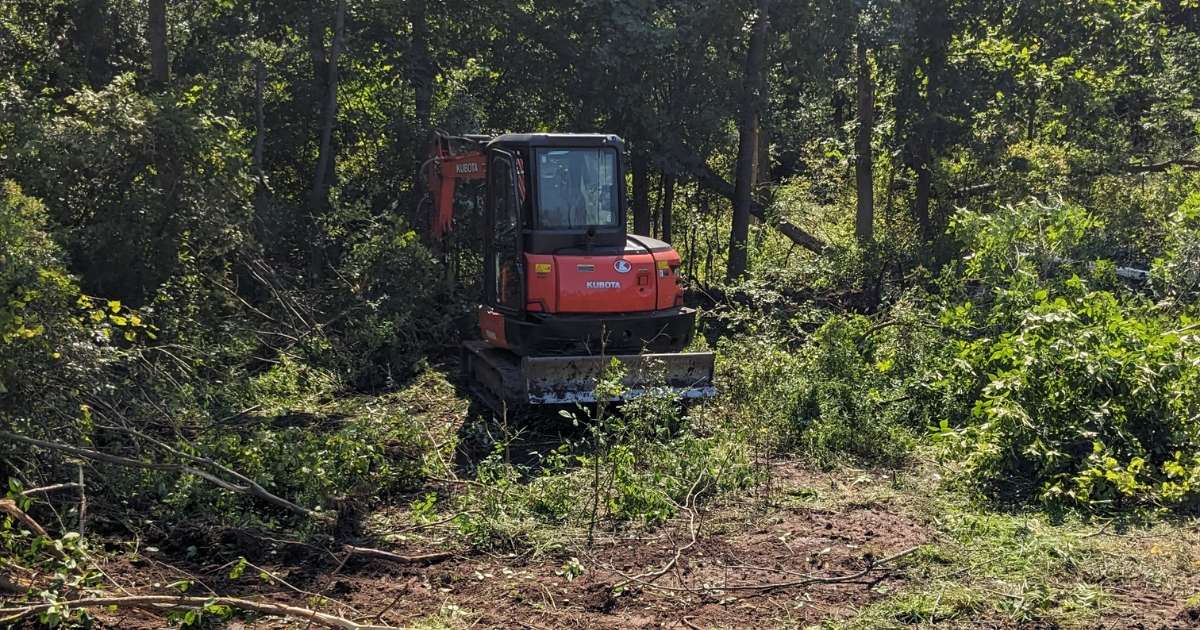
Land Clearing Process: Vegetation Removal
Vegetation Removal
With permits in place, the next step is removing unwanted vegetation, which involves using chainsaws and heavy machinery to cut down and remove trees, eliminating shrubs and undergrowth with brush cutters or mulchers, and extracting tree stumps through grinding or pulling to ensure a smooth surface.
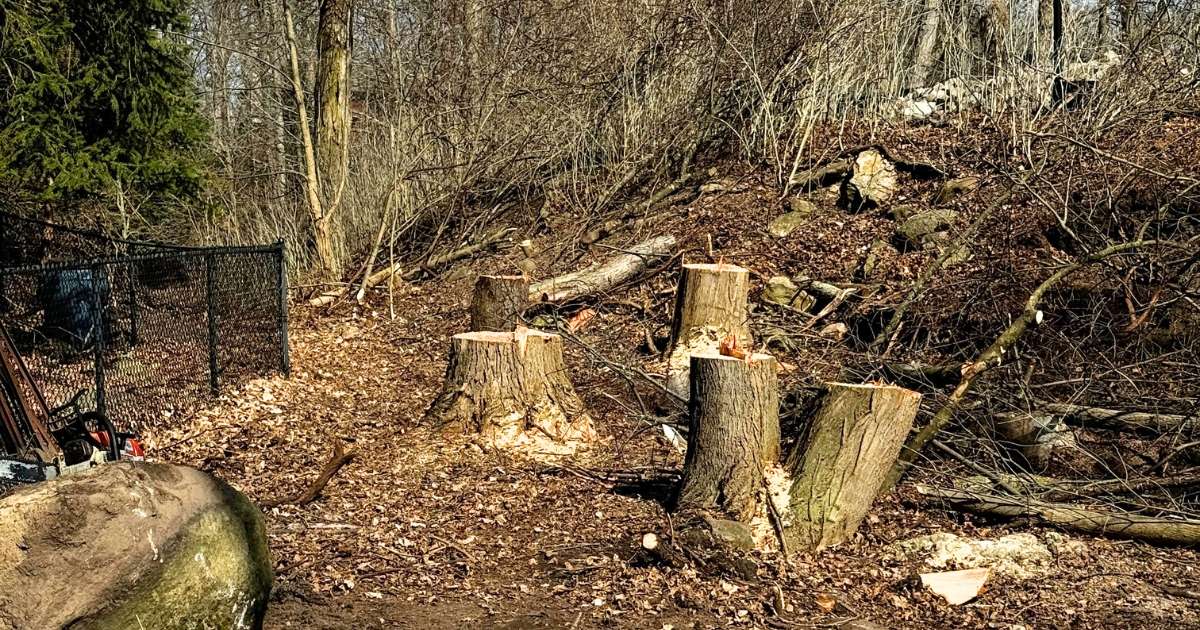
Land Clearing Process: Tree Cutting and Removal
Tree Cutting and Removal
Large trees are carefully evaluated to determine the safest direction for felling, ensuring minimal impact on surrounding structures and vegetation.
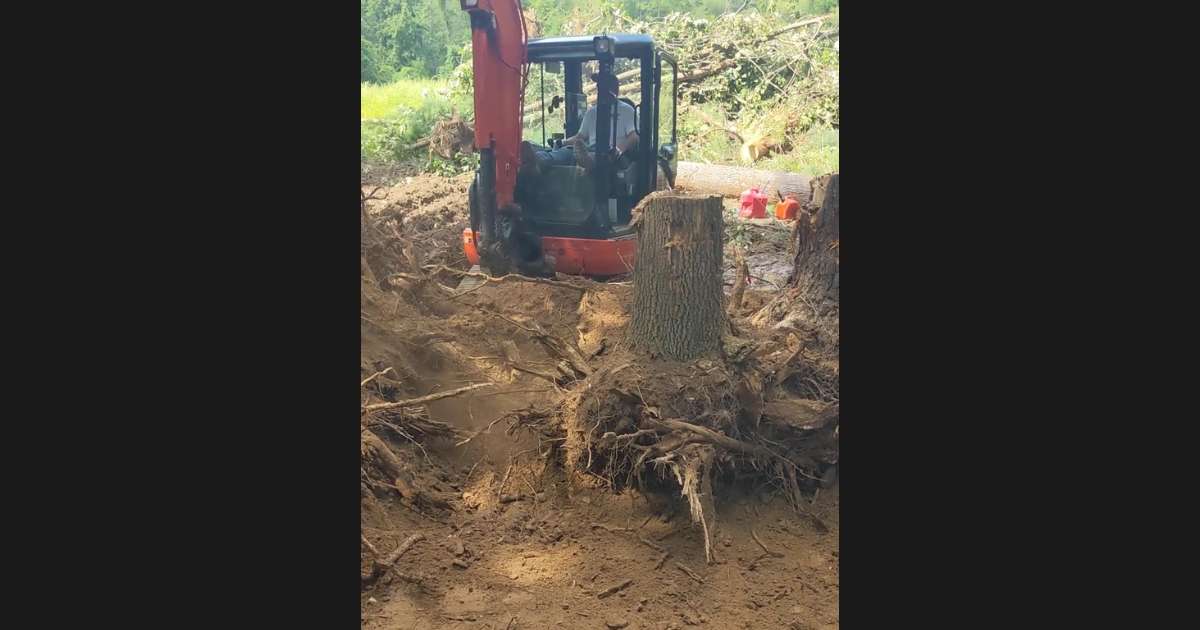
Land Clearing Process: Tree Stumps Removal
Stumps Removal
Once trees are felled, the next challenge is removing their stumps from the ground. Stump removal methods include stump grinding or pulling.
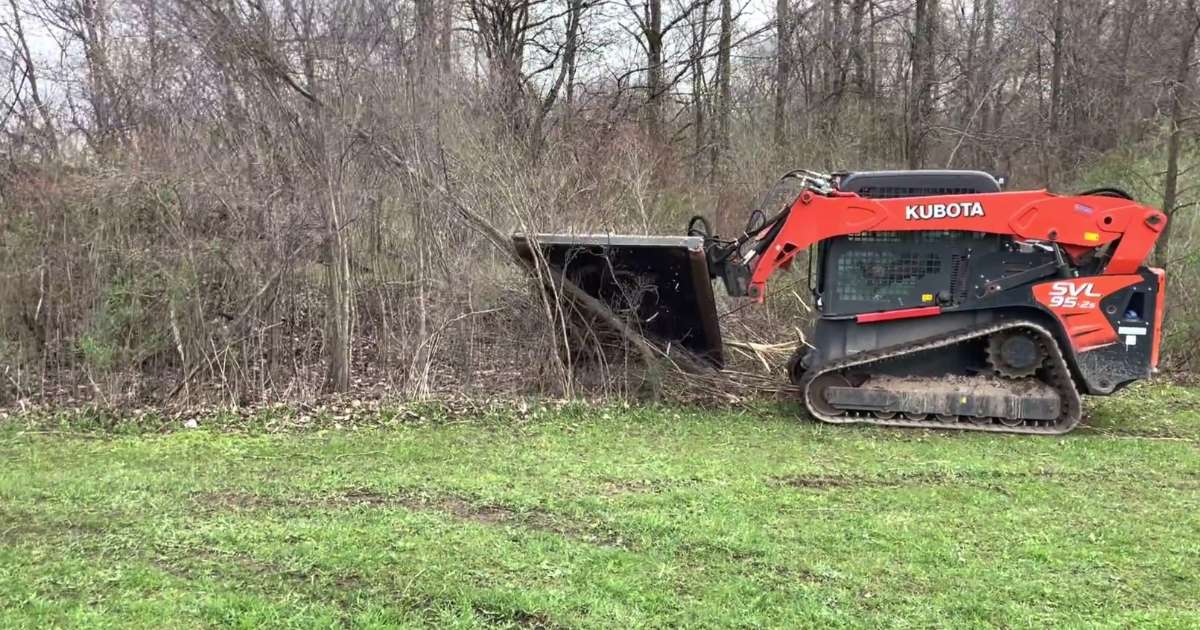
Land Clearing Process: Brush Clearing
Brush Clearing
This involves the removal of smaller vegetation such as shrubs, bushes, and thick undergrowth. Brush cutters or mulchers are used to efficiently clear large areas of dense vegetation.
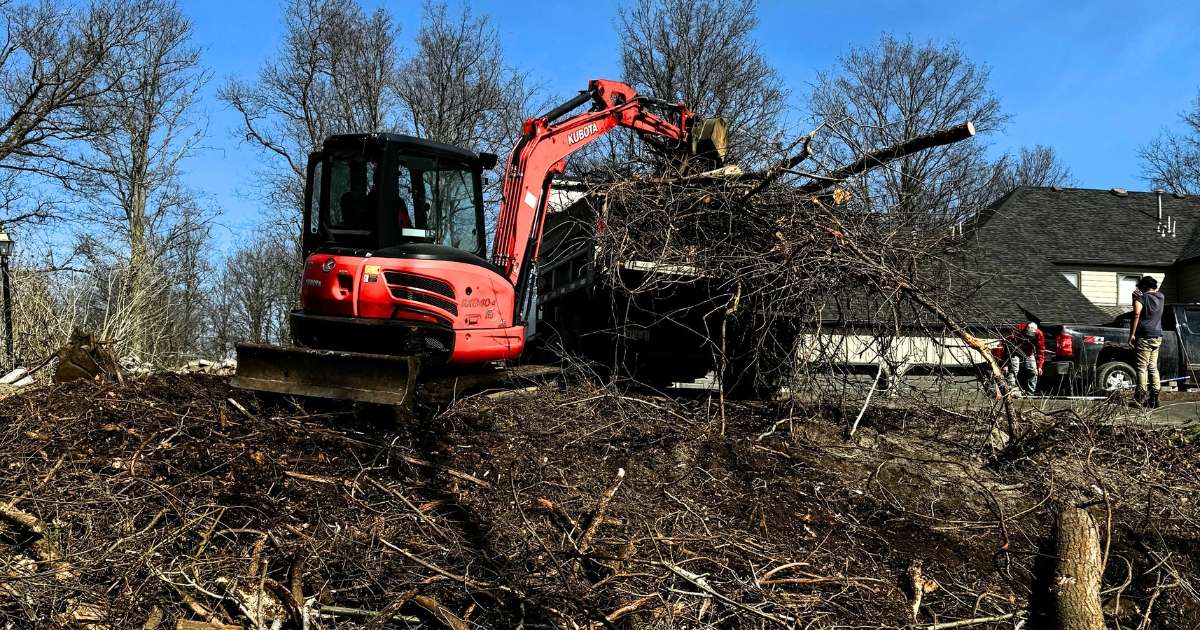
Hauling and Disposal of Debris
Proper disposal of removed vegetation is essential for maintaining a clean site. This includes chipping and mulching smaller branches and brush for use in landscaping or erosion control, transporting larger debris and tree trunks off-site to designated disposal areas, and using organic material for composting to benefit soil fertility.
• Chipping. This is the process of mechanically reducing branches and other vegetation into smaller wood chips using a wood chipper. These wood chips can then be reused for mulching, erosion control, or as biomass fuel.
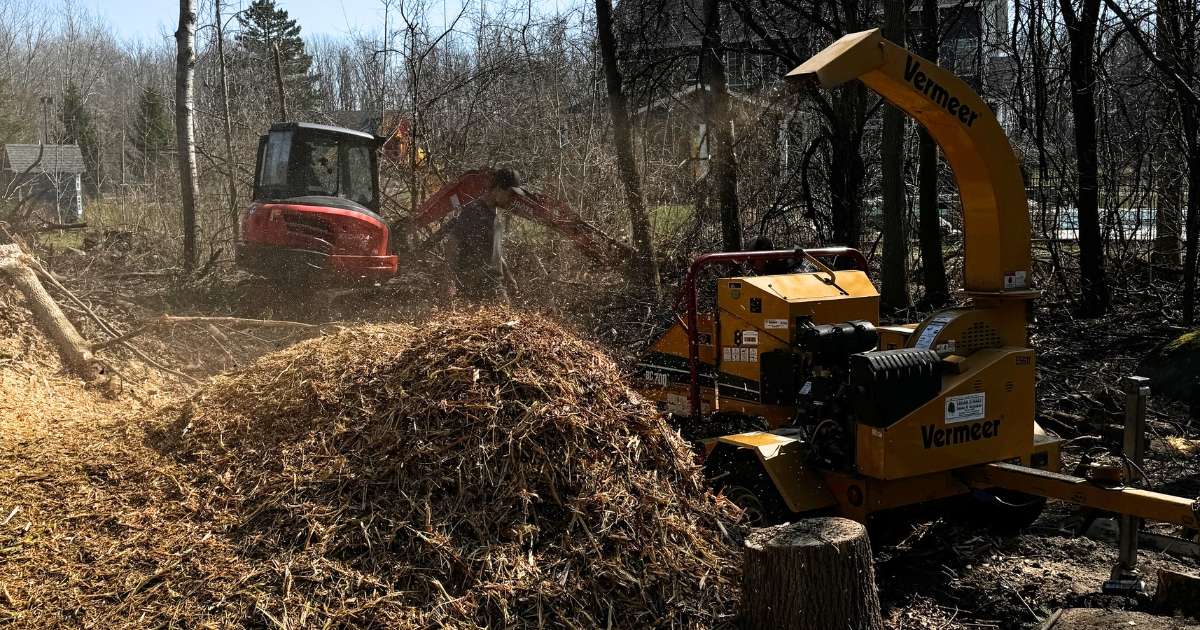
Chipping: Mechanically turning tree branches to wood chips using wood chipper
• Recycle and Repurpose. Wood chips from branches and trees can be reused as mulch for landscaping or ground cover. Larger timber may be repurposed for woodworking projects or biomass energy production.

Repurposing cut trees as wood mulch
• Burning. controlled combustion of vegetation and organic debris. This method can efficiently reduce large volumes of waste into ashes and is often used in agricultural settings or where local regulations permit controlled burning.
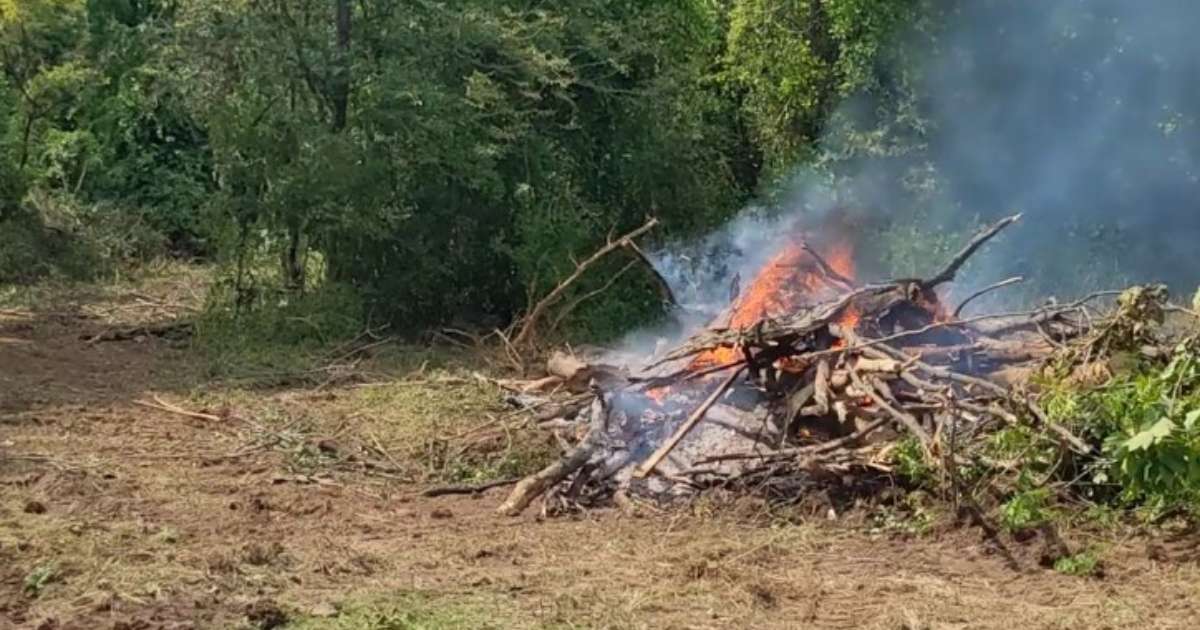
Burning of Trees and Vegetation
• Landfill Disposal. This involves transporting debris to designated landfill sites where it is safely deposited and managed according to waste disposal regulations.
Land Grading
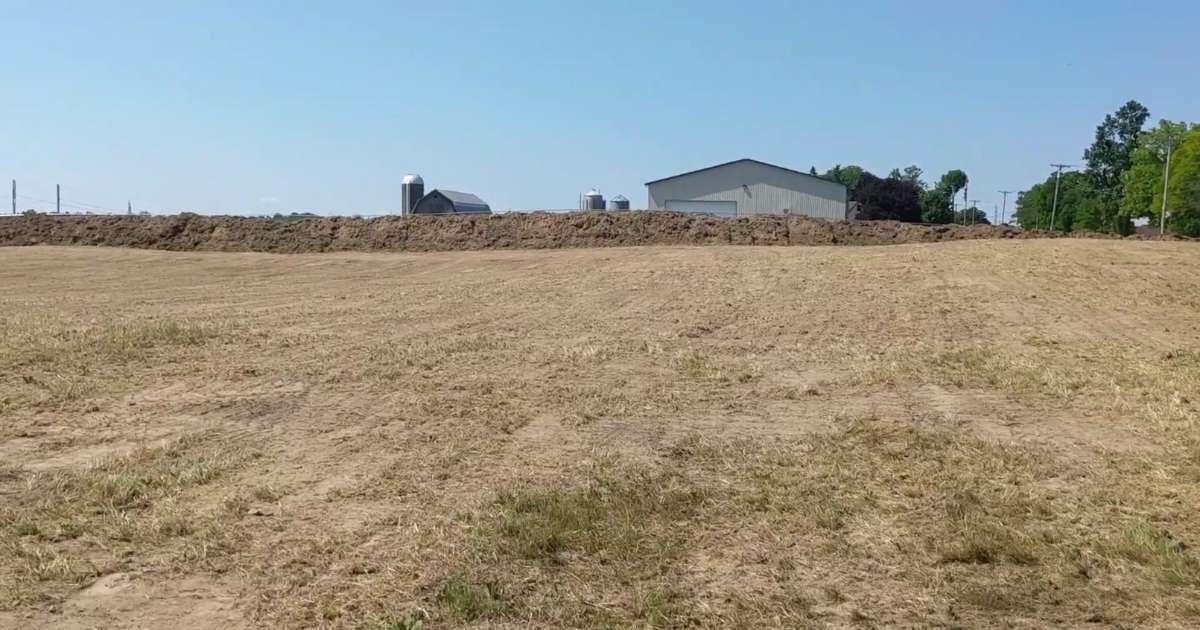
Land Grading Project
The final step in the land clearing process is land grading to create an even, level surface. After the removal of trees, especially their stumps, there may be depressions or dips left in the soil. This involves redistributing soil to achieve the desired slope and surface, implementing erosion control measures such as silt fences and retaining walls to prevent soil erosion, and conducting a final inspection to ensure the land is properly graded and ready for construction or other planned activities. These areas need to be filled and leveled to ensure a stable and even surface.
Working with Professional Land Clearing Services
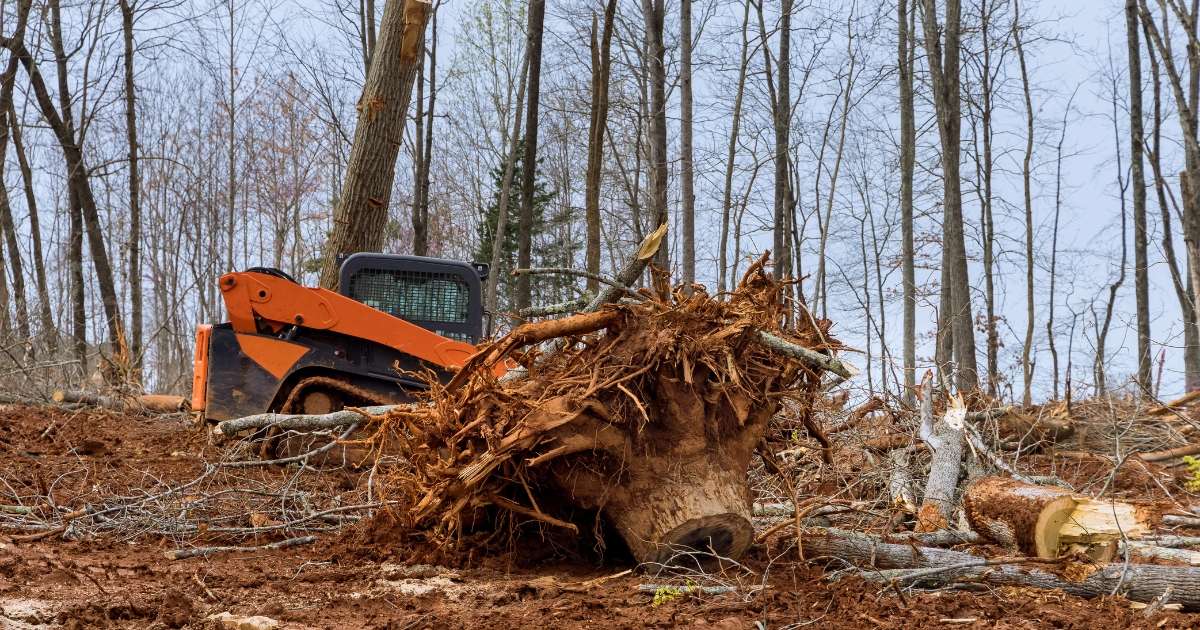
Working with Professional Land Clearing Contractor
Partnering with professional land clearing services offers numerous advantages that can greatly benefit your project. Here are some key benefits and considerations.
Benefits of Professional Land Clearing Services
- Manpower and Expertise: Experienced crews bring specialized skills and knowledge to handle complex land clearing challenges effectively. They are trained in safe operation of equipment and techniques to maximize productivity while minimizing risks.
- Specialized Equipment: Professional contractors have access to advanced machinery and equipment specifically designed for land clearing tasks. This includes bulldozers, excavators, mulchers, and stump grinders, which enable efficient and precise clearing operations.
- Streamlined Operations: Professional services streamline the entire land clearing process, from initial planning and permits to final grading and site preparation. This ensures smooth project execution and timely completion.
- Efficiency and Cost-effectiveness: With efficient equipment and skilled personnel, professional contractors can complete tasks in a shorter time frame, reducing overall project costs and minimizing disruptions to your schedule.
- Safety Standards: Safety is paramount in land clearing operations. Professional contractors adhere to strict safety protocols to protect workers, property, and the environment during all phases of the project.
- Environmental Considerations: Professionals understand the importance of environmental stewardship. They employ practices that minimize soil erosion, protect water resources, and preserve native vegetation whenever possible.
Case Study: Constructing a 1850-ft Long Gravel Driveway in a Farmland After Land Clearing
To give you a better idea of what we can achieve, let me share a recent project we completed for a homeowner.
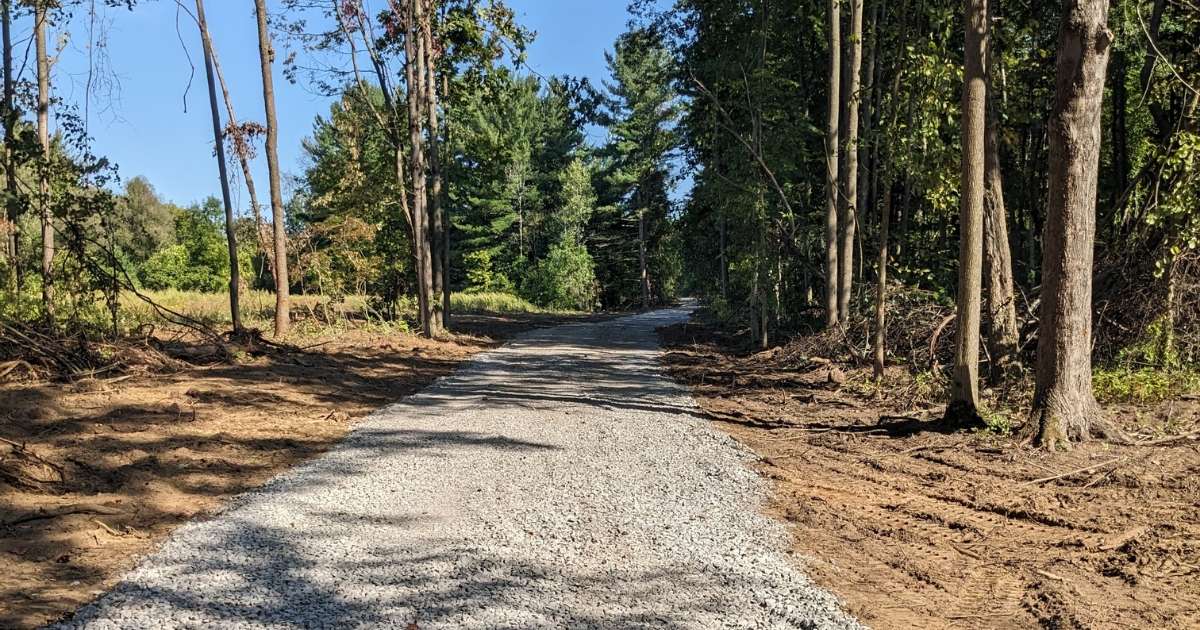
In Hilton (Monroe County), we completed the grand project of installing a 1850-ft long gravel driveway on raw land teeming with tall trees and thick grass. To prepare the site for new gravel driveway installation, our team conducted thorough land clearing operations, removing trees, excavating stumps, and clearing dense undergrowth. This initial phase ensured a clean, level and suitable foundation for the new driveway installation. Following land clearing, we proceeded with the installation of the new gravel driveway.
Partner with DC Hauling Excavating and Gravel Driveway Specialists for Your Land Clearing Needs
At DC Hauling Excavating and Gravel Driveway Specialists, we bring over a decade of experience and expertise to meet all your land clearing requirements. Our commitment to excellence is backed by numerous satisfied customer testimonials and reviews, reflecting our dedication to quality and customer satisfaction.
As your trusted one-stop contractor, we not only specialize in comprehensive land clearing services but also offer excavation services tailored to your specific project needs. Whether you’re preparing for construction, enhancing your landscape, or optimizing agricultural land, our team ensures efficient and right execution from start to finish.
We prioritize top-notch customer service and clear communication throughout the entire process, keeping you informed and involved at every stage. This collaborative approach ensures that your vision is realized with the highest standards of professionalism and craftsmanship.
Proudly offering land clearing services in these New York counties: Niagara, Erie, Orleans, Genesee, Monroe, Livingston and Ontario counties especially in these known cities and villages: Middleport, Barker, Akron, Alden, Albion, Holley, Lyndonville, Medina, Alexander, Bergen, Elba, Le Roy, Oakfield, Corfu, Pavilion, Rochester, Spencerport, Hilton, Fairport, Brockport, Webster and other surrounding areas.
If you need land clearing services, DC Hauling Excavating and Gravel Driveway Specialists, Inc. can help. To schedule your land clearing services with us, you may contact us here.
